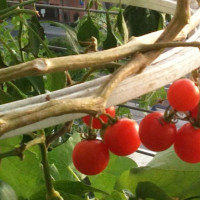A single LOT can do A LOT with Permaculture Design
This single urban lot is a Permaculture Design case study that brings into focus the Permaculture set of ethics: care of the people, care of the earth, and return of surplus.
The premise starts by trying to find out how much abundance and wellbeing we can obtain by applying Permaculture principles on a typical urban size lot in a Long Beach neighborhood. We want to make the case to demonstrate the capacity of a single lot to become a productive, self-sustained, and abundant community farm.
The focus is on bringing together people of all ages, help them connect to the natural environment, grow fresh food locally, and envision a meaningful way to tackle climate change.
The principal functional components of this project are:
Wellness, Community, and Teaching
Farm Urbana’s MISSION of this project is to articulate a connection between Wellness, Community, and Teaching, to shape a beneficial interaction among members, functions, and elements on the farm, create a design strategy, and enlarge the conversation about climate change and what we can do about it, individually.
Our VISION is to amplify the attention given to the young generation to engage them in the Permaculture way of learning, observing, and working on the farm. Farming, as a process, facilitates connecting the children to natural cycles, rules to follow, make choices, and make decisions, which are great attributes to develop a sense of self-worth and empowerment.
PERMACULTURE PRINCIPLES
As part of the site analysis in review, we realize that a tucked-in urban lot like has its advantages: The lot is protected from winds, floods, and fires.
By observing the sun trajectory, we start to understand the site and how to take full advantage of the sunny areas for cultivation, as well as of the needed shade areas for other side activities.
As we focused on several Permaculture Design principles, stacking elements together helped to incorporate multiple functions in its design. The principle of stacking serves well on a small lot.
By combining elements, and functions throughout the farm, it becomes a recurring aspect that includes stacking of diverse kinds and size of trees in the fruit forest, by selective vegetable guilds and by creating opportunities for vertical edible vine plants.
For example, tomatoes and cherry tomatoes on the bridge trellises, become connectors between the vegetable patches. The leguminous crops, like beans and peas, are trained to climb on the vertical bamboo triangle posts. The leguminous plants are valuable for the nitrogen released from the nodules on their roots.
Plenty of sun beaming upon the Northern site fence, from the South, offers the benefits of the edge effect on the patterns forming on vertical growing apple and pear espaliers. Stacked underneath are berries and native plants.
We will also use the on-site production of the nitrogen-fertilizer nutrients from chicken waste, mulch from leguminous cover grounds plants, and some trees inter-planted in the fruit forest.
This Long Beach lot has a mild slope from East to West, perfect for water distribution. We propose measures to minimize the use of water by a rational distribution from the water-barrels placed at the highest point of the lot and by having abundant on-site mulch resources.
The energy sourced by the solar roof collectors on the roof of the existing structure will provide power for various future needs and for the pump to move water from a reserve tank to the barrels. From the barrels, the water flows through the mainline and then drip-line irrigation to vegetable patches.
THE PROBLEM IS THE SOLUTION
“The Problem is the Solution” – a well-known quote among Permaculturists, is present on our farm in its many resilience aspects:
- by using the on-site solar system as the energy source instead of fuel,
- by recycling the farm’s waste and weeds into compost, not landfill,
- by reducing the pressure on the agricultural land to restore the soil,
- by increasing local food availability instead of trucks carrying food,
- by actively decreasing the daily carbon footprint,
- by the beneficial plants and bugs for pest control on-site.
SUMMARY
The dynamics between different communities’ desires provide different creative methods and aspirations and become a conduit to get together in learning from nature about life and practicing Permaculture Design. We value the realm of possibility for cooperation between members and the likelihood of enjoyment for work, interaction, and harvesting.
An essential part of the Permaculture Design framework became the synergy created between different age groups. The youngest community members get to have their learning and experimentation area of farming facilitated by their individual 26” high raised beds. Children and youth are supported by observing and encouraged to participate with all community members in activities like Meditation, Yoga, Art workshops, and other various events.
THE HOW AND WHY?
The typical urban lot in Long Beach can become representative of the city for envisioning how a local neighborhood site can evolve into an eco-friendly and resilient community through understanding and practicing of Permaculture Design thinking.
From learning about growing food, the younger generation can develop a positive social engagement that contributes to the world. It is vital to activate local communities in the city and offer to future generations ways to create a harmonious and enthusiastic connection between people and nature while learning useful skills from the practice of Permaculture Design.
With the redesign of this lot, we have a vision of applying Permaculture Design ethics and principles to the community. We can create a healthy framework that can provide sustainability and resiliency to the neighborhood’s population.
By cultivating food locally, people develop a positive local healthy lifestyle that impacts climate change and creates pathways for a prosperous future.
A single LOT can do A LOT with Permaculture Design







